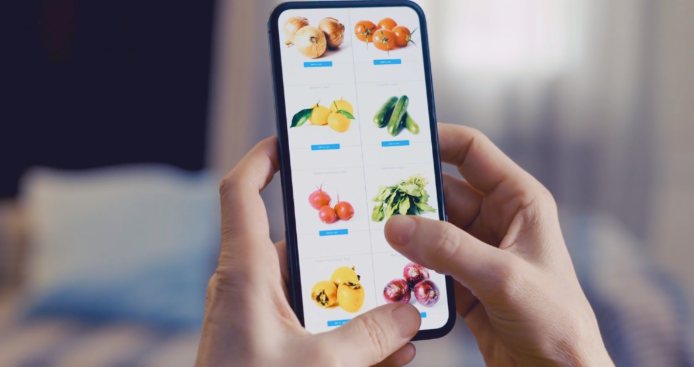
How brands can drive sales growth in a changing landscape
Across Europe, consumer habits are reshaping the grocery retail landscape. Large-format stores are seeing declining traffic, while convenience-driven formats such as 'click & collect', 'quick commerce', and 'discounters' are gaining traction.
In France, this transformation in grocery retail is particularly visible: hypermarkets are gradually losing appeal, while 'drive' (grocery pickup services) is expanding rapidly. Similar shifts are seen elsewhere: in the UK, 'click & collect' is now mainstream; in Spain and Germany, discounter retailers and rapid delivery solutions continue to attract value-driven consumers. Although the models differ from one country to another, the underlying drivers remain the same: inflation eroding purchasing power, accelerated digital adoption, and lifestyles favouring speed and convenience.
In this article, we explore how France’s experience reflects—and can inform—wider market shifts. We’ll examine drivers behind changing shopping habits, how retail formats are evolving, and—most importantly—how brands and manufacturers can stay visible and drive growth through these changes.
The decline of hypermarkets and non-food sales
France’s grocery retail sector is undergoing a profound transformation. Large hypermarkets, are gradually losing their appeal, while 'drive' services (online grocery pickup) continue to gain significant market share. This shift reflects broader changes in consumer lifestyles - shoppers increasingly prioritise speed, convenience, and value, with inflation and digital adoption reinforcing these preferences.
At the same time, non-food sales in hypermarkets have fallen sharply, explained by multiple factors. According to Nielsen, revenue from non-food categories declined from €21 billion in 2010 to €14.7 billion in 2018—a 30% drop. More recently between 2020 and 2024, “bazaar” sections lost nearly 14% in value (1) These declines are largely due to inflation and reduced purchasing power, which lead consumers to limit non-essential spending, as well as the rise of discount specialists and e-commerce, which are often more attractive for these product ranges (2).
This is not just a French phenomenon. Across Germany, Spain, and the UK, hypermarkets face similar challenges as online retailers and discount chains capture growing market share. For brands, this shift calls for a reallocation of investment. At CPM we help our clients adapt their retail strategy by strengthening their presence in specialist and digital channels while still leveraging food formats for visibility.
The discounter effect: price, scale, and growth
As hypermarkets decline, hard discounters are rapidly gaining ground across Europe. Their appeal lies in a simple formula: low prices, focused ranges, and efficient formats that meet the needs of increasingly price-sensitive consumers.
In France, the growth of discounters is accelerating. Retailer Action operates compact stores of 800–1,200 m² with an average item price of €1.70 in 2022 - offering 25% of its range below €1. Meanwhile, Atacadao, a Carrefour-owned format from Brazil, entered the French market in June 2024 by converting a former 10,000 m² hypermarket into a low-cost warehouse-style store, with prices up to 15% below market average.
This rise of discounters highlights a broader shift in consumer purchasing habits—shoppers are trading down, seeking value-driven alternatives, and embracing simplified shopping experiences. For brands, it’s a signal to adapt product strategy and pricing models to remain competitive in these fast-growing channels.
The rise of the 'drive': speed, convenience, and satisfaction
The 'drive' format - order online, collect by car - is booming in France, driven by its promise of speed and convenience. For busy shoppers, it offers a streamlined alternative to in-store trips. Most 'drives' match in-store pricing and assortments, with 74% of consumers valuing price parity and 60% wanting the same product choice, according to Neomag.
Service satisfaction is high - UFC-Que Choisir also notes that 86% of users are happy with the service, particularly for speed and courtesy with 98% of pickups taking less than 10 minutes.
Despite these advantages, several obstacles remain.
- Fresh and short-dated products remain a concern: nearly half of consumers still prefer to select their own meat, fruits, or fish, according to Neomag.
- The risk of stockouts or unwanted substitutions also creates a sense of insecurity regarding service reliability.
- In addition, the digital user experience is uneven: some 'drive' websites still struggle to compete with the navigation standards of major e-commerce players, with an average score of 4.9/10 according to the same source.
Despite this, the format is growing fast. For retailers and brands, it’s essential to deliver a reliable, intuitive experience that meets rising expectations and strengthens loyalty.
Technology is transforming the shopping experience
Technology is at the heart of modern retail transformation. From automated logistics and real-time inventory management to mobile apps and data analytics, tech solutions enable faster, more reliable, and personalised shopping experiences.
By leveraging these innovations, brands can optimise product visibility, streamline operations, and engage consumers effectively across both online and physical channels, ensuring convenience, efficiency, and profitability in a rapidly evolving market.
In France, the 'drive' format reflects the same consumer need for speed and convenience that we see in 'click & collect' in the UK or 'quick commerce' in urban Germany. While the models differ, the challenge is universal: how can brands remain visible in a digital-first path to purchase? At CPM we enable clients to do this by optimising product findability online, activating digital trade promotions, and building omnichannel shopper journeys that connect online ordering with physical touchpoints.
Omnichannel growth: formats are changing, strategies must too
Retailers across Europe are doubling down on omnichannel strategies to meet changing consumer behaviour. Some retailers such as Darty and Fnac are experiencing growth through smaller formats and the development of online sales. Fnac Darty focuses on omnichannel and services to accelerate growth: in 2025, e-commerce accounts for around 21% of revenue, with 49% of these sales combining online and in-store pickup (4). The “Everyday” strategy aimgrery retails to generate at least 30% of revenue via the web by 2025 (5). Additionally, services and diversification (such as stationery and home décor) show double-digit growth, boosting profitability (6).
Omnichannel strategies are no longer optional, they’re the foundation of growth across categories. Whether it’s Fnac Darty in France, Waitrose in the UK, or MediaMarkt in Germany, retailers are blending online and offline to serve consumers seamlessly. CPM help brands leverage this by creating activation plans that ensure consistent visibility across both digital and physical shelves, while capturing data to personalise engagement.
Shrinking formats and experience trade-offs
The 'drive' model also raises structural questions. First, the dehumanisation of the shopping experience: for many consumers, grocery shopping is also a social moment, a routine, or even a source of surprise or discovery. A key point in this evolution is the decline in hypermarket traffic, explaining the gradual reduction in their average size. The drop in hypermarket traffic has led to decreased sales areas. Among initiatives, Auchan plans to reduce the size of certain hypermarkets by up to 25% by 2027 to restore profitability (7). Auchan has also confirmed the end of its historical model of overly large hypermarkets, in line with market share losses.
While drive services offer efficiency, they also remove elements of the traditional shopping experience - human interaction, product discovery, and the sensory connection to food. For many consumers, this change represents a loss of routine, choice, or quality reassurance.
Retailers must now balance convenience with experience, ensuring that evolving formats don’t come at the expense of shopper satisfaction and brand connection.
Environmental impact and questions of sustainability
The environmental impact of the 'drive' is increasingly debated. On one hand, consolidating purchases and trips could reduce the carbon footprint compared to more frequent individual shopping trips. On the other hand, multiplying logistics platforms, additional packaging, and car trips for pickups raises real questions about the model’s sustainability.
Shrinking hypermarkets, compact urban formats, and sustainability concerns are part of a wider European debate. From Spain to Poland, retailers are reassessing how to balance profitability, consumer expectations, and environmental impact. At CPM, we advise clients on how to future-proof their retail strategy —ensuring that their products are not only available but also aligned with evolving consumer values such as sustainability and convenience.
New opportunities for brands and suppliers
This sector transformation also brings benefits for brands and manufacturers, who can better target their offers. For manufacturers, refocusing hypermarkets on core food products allows better management of assortments and margins by concentrating on higher-rotation and more profitable categories. While shifting non-food products to specialised or e-commerce channels offers greater opportunities for targeted promotions and showcasing the offer through more agile formats.
An ADEME report (2024) notes that the drive models may have a higher environmental impact than in-store shopping when it results in dedicated car trips, not shared – underlining the importance of strategic planning across channels.
Finally, the profitability of the drive model for retailers remains uncertain. While demand is growing, the logistical cost of the drive is high: order preparation, real-time stock management, specific infrastructure, dedicated labour. These fixed costs weigh heavily, especially in a context where food sector margins are already very thin. Some retailers rely on automation or the “dark store” model to improve productivity, but this requires significant investment.
Supporting shopper engagement in a 'contactless' retail model
As contactless retail grows, retailers are finding new ways to maintain engagement and drive conversion. They also adapt strategies, so manufacturers remain visible on the drive and related services. This includes optimising assortments, improving on-site visibility, and using tools like suggested products, impulse triggers, and key placements. Some are also introducing tele-sales, call centres, and interactive kiosks to support shopper decisions remotely. This way, brands can be promoted and sold effectively, even in a “contactless” mode. According to an LSA analysis (2024), only groups that have optimised their supply chain on a large scale can achieve profitability in the drive - making brand visibility and efficiency more important than ever.
Conclusion: staying visible and driving growth in evolving grocery retail
The 'drive' format has clearly established itself as a pillar of modern grocery retail in France, just as click & collect and omnichannel strategies are doing across Europe. Its success is built on convenience, speed, and competitive pricing - but significant challenges remain: consumer trust in fresh products, inconsistent digital experience, sustainability concerns and profitability pressures.
At CPM, we support manufacturers and brands as they navigate the major shifts reshaping modern commerce from digitalisation and evolving consumer behaviours to the rise of new purchasing channels. We help them remain visible along increasingly digital shopping journeys, adapt their assortments to emerging formats, and activate trade marketing strategies that seamlessly combine physical and digital touchpoints.
With cutting-edge solutions such as Flywheel, launched in France by OMG (part of Omnicom) in June, we bring brands a comprehensive Retail Media and e-commerce suite. Flywheel not only enhances visibility but also optimises commercial performance, leveraging tools such as the Flywheel Commerce Cloud, real-time reporting, product availability and promotion tracking, as well as marketplace monitoring. Our mission is to transform evolving consumer and market challenges into sustainable growth opportunities for our clients — in France and across European markets.
Sources (en français) :
(1) Circana/Nielsen retailixpartners.com
(2) dev.intotheminds.com
(3) Action hard dicounters
(4) (omnicanal) Infonet
(5) ecommercemag.fr
(6) InfonetActuaLitté.com
(7) Le Monde.fr


 3 minute read
3 minute read


